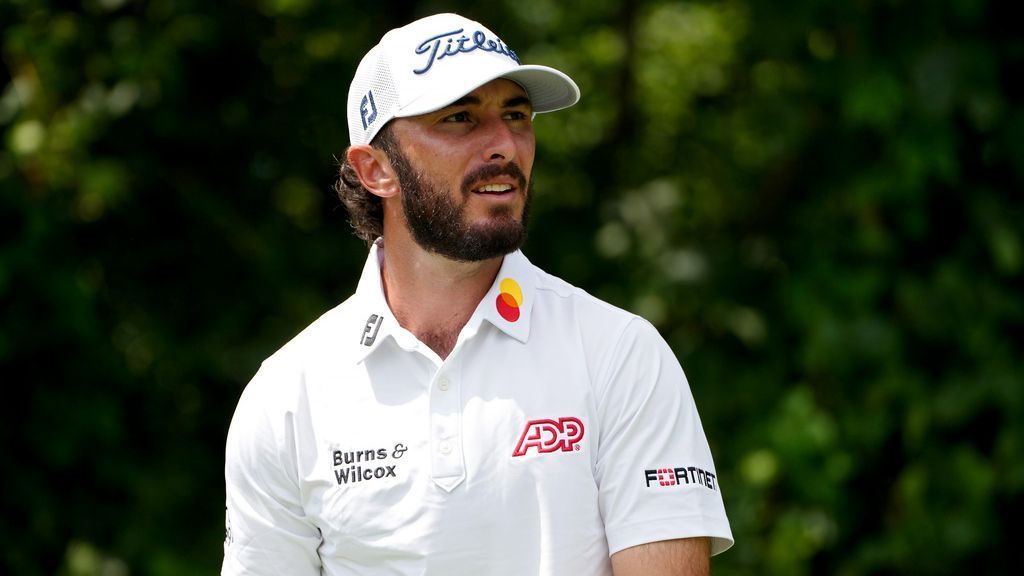
I’ve been fascinated by the concept of mirror picture twins because the Giants signed Taylor Rogers final December, pairing him up along with his brother Tyler and illuminating me to their uncommon genetic connection. As monozygotic (i.e., equivalent) twins, they arrive from the identical fertilized ovum and, thus, the identical DNA. Taylor, nonetheless, is left-handed, and Tyler is right-handed, a manifestation of their mirror picture relationship.
Mirror picture twinship makes for an ideal metaphor, and as a author, nothing excites me extra. It’s like a real-world instance of a contronym, a phrase that may have two reverse meanings in numerous contexts; the phrase “dusting” at all times seems the identical, however typically it means to take away mud, and different instances it means to sprinkle it on. It’s the identical factor with the Rogers twins. They appear precisely the identical till they take the mound.
Taylor Rogers relieving Tyler Rogers at the moment.
Hitters be seeing this… ? pic.twitter.com/5Tyq6S3RTD
— Rob Friedman (@PitchingNinja) July 16, 2023
The other handedness might be ascribed to genetics; the submarine factor, not a lot. However that’s why the Rogers brothers are so attention-grabbing. Their mirror picture relationship goes past heredity. From a field rating or the again of their baseball playing cards, they’re nearly indistinguishable. Each pitchers predominantly depend on a sinker and slider/sweeper, and with that two-pitch combo, they’ve earned comparable leads to 2023:
Twins On the Mound
Pitcher
G
ERA
FIP
xFIP
WAR
Tyler Roger
64
3.20
3.82
4.22
0.5
Taylor Rogers
58
3.06
3.78
4.11
0.4
However they’ve taken two utterly totally different paths to achieve these outcomes. Whereas they work with the same arsenal, Taylor at all times leads along with his sweeper; Tyler leans on his breaking ball in opposition to same-handed hitters and his fastball in opposition to lefties. Taylor, the elder Rogers twin by 30 seconds, additionally throws his pitches with a lot larger velocity and a a lot larger arm angle. His aim is to rack up strikeouts, however his ever-so-slightly youthful brother pitches to induce weak contact:
Two Journeys to the Identical Vacation spot
Pitcher
Okay/9
BB/9
GB%
FB%
GB/FB
Taylor Rogers
10.80
4.32
41.2%
43%
0.96
Tyler Rogers
7.17
2.18
50%
34%
1.47
The identical, but utterly totally different. It’s a enjoyable relationship to find. And the Rogers brothers aren’t the one mirror twins in Main League Baseball, even when they’re, technically, the one mirror picture twins in Main League Baseball. Certainly, one other fascinating pair of pitchers is exhibiting off what makes them so comparable and but so totally different, they usually’re doing so on a a lot greater stage: Spencer Strider and Justin Steele.
Steele and Strider don’t look a lot alike. They have been born on totally different days, in numerous years, in numerous cities to totally different moms. But, in some ways, they’re twins. They sit beside each other on the NL WAR leaderboard and the NL Cy Younger projector, trailing solely Zack Wheeler on the previous and Blake Snell on the latter. They’re the one two certified NL starters with a FIP beneath 3.00 and a profitable share above .750. I might additionally argue they’ve been the 2 most compelling pitchers to observe within the NL this season. Snell’s efficiency has been a sight to behold, however all of the underlying numbers recommend he’s pitching over his head. In the meantime, Wheeler has simply been basic Wheeler, and Logan Webb seems like typical Webb. In distinction, Steele has damaged out as a bona fide ace, surpassing all preseason expectations, and Strider is proving his dominant rookie season was no fluke.
On the floor degree, Strider and Steele have comparable arsenals and approaches. Every is actually a two-pitch pitcher, main with a four-seam fastball and complementing the heater with a slider. They each dial up their slider utilization once they have the higher hand, both with two strikes or the platoon benefit. What’s extra, they find their pitches similarly, albeit in a mirror picture of each other. Strider, the righty, is pictured on high; Steele, the lefty, is down beneath:

Throughout every of their prospect days, most evaluators noticed Strider and Steele as potential relievers on account of their restricted arsenals. Every has performed round with extra pitches, too, particularly in opposition to opposite-handed hitters, however they’ve finished their finest work by leaning on their finest pitches. Maybe they’re extra predictable than most beginning pitchers, however nonetheless, they know methods to make opposing hitters play proper into their fingers. Every has a swing charge of about 52% in opposition to his slider and 54% in opposition to his fastball. That places them first and second within the NL in whole mixed swings in opposition to the 2 pitches; nobody else comes inside 300 swings of Steele or 400 of Strider. General, just one certified NL pitcher, Sandy Alcantara, has the next swing charge.
However on the subject of the outcomes of these swings, that’s the place the similarities finish. Strider goals for swings as a result of he needs swings and misses. He’s an influence pitcher by and thru, with 93rd-percentile fastball velocity, a 99th-percentile whiff charge, and a 99th-percentile strikeout charge. We dwell in a strikeout-heavy period, and nobody embodies the zeitgeist fairly like Strider. He’s the one pitcher in historical past to document 200 strikeouts in his first 130 innings of the season, and he’s already finished so twice in his two-year profession. His stroll charge, house run charge, and hard-hit charge are all respectable however unspectacular; strikeouts are the spine of his recreation.
Steele, alternatively, induces swings so he can generate groundballs. He has each one of many 5 highest groundball charges and one of many 5 lowest fly ball charges amongst NL starters, giving him the third-highest GB/FB within the league. He stands in stark distinction to Strider, who has the bottom groundball charge and the best fly ball charge on the Senior Circuit. Steele isn’t a wizard at limiting laborious contact, however since his common launch angle is so low, he leads all certified pitchers with a 5.2% barrel charge, and he boasts the bottom house run charge within the NL. For the southpaw, his strikeout charge is respectable however hardly spectacular as his stroll charge ranks within the 93rd percentile.
Strider and Steele accomplish such totally different targets with such comparable approaches due to how totally different their particular person pitches are; their four-seams and sliders are alike in identify solely:
4-Seam Fastballs
Pitcher
Velo
Extension
Spin
Lively Spin
V Mvmt. (vs. Avg)
H Mvmt. (vs. Avg)
Strider
97.3
7.1
2363
96
2.5 inches
-1.8 inches
Steele
91.8
6.3
2400
59
-5.3 inches
-7.6 inches
Sliders
Pitcher
Velo
Extension
Spin
Lively Spin
V Mvmt. (vs. Avg)
H Mvmt. (vs. Avg)
Strider
85.7
7.0
2345
33
0.2 inches
0.9 inches
Steele
83.2
6.2
2656
51
1.2 inches
7.8 inches
Strider challenges batters with a blistering quick four-seamer that appears even quicker because of his 93rd-percentile extension. He makes use of backspin to induce a rising impact, tricking his opponents into swinging beneath the pitch. Then there’s his slider, which is so laborious to hit due to how properly it performs off his fastball. The 2 choices look comparable out of his hand however are available in at wildly totally different speeds in wildly totally different areas. By itself, his slider doesn’t appear to be it ought to be so devastating, but it’s been one of many least hittable pitches within the recreation; solely Kodai Senga’s forkball has the next whiff charge (min. 400 pitches). After they do make contact, opposing batters can hit Strider fairly laborious and fairly far, however that entire “making contact” factor is simply so rattling powerful within the first place.
In the meantime, Steele’s four-seamer is so uncommon that a number of individuals have in contrast it to a cutter or a sinker as an alternative. Certainly, he can throw the identical pitch with two totally different motion profiles relying on the place he needs it to finish up. His slider isn’t as totally different from his fastball as Strider’s, however he throws it with a lot glove-side motion that batters battle to get the barrel on the ball. His whiff charge isn’t as excessive, however his xwOBA on contact is far decrease; amongst certified NL starters, solely Miles Mikolas has a decrease xwOBAcon on sliders.
Because the cherry on high of the Strider/Steele comparability, every ace’s distinctive fashion makes him splendidly well-suited for his respective groups. Atlanta’s largest asset on protection is catcher Sean Murphy, top-of-the-line pitch framers within the recreation. His backup, Travis d’Arnaud, isn’t any slouch both. This provides Strider extra freedom to play within the shadow zone, the place he induces a ton of chases and misses. The Cubs, alternatively, boast top-of-the-line infield defenses within the recreation, excellent for a groundball-heavy pitcher like Steele. His .223 BABIP on groundballs is 20 ticks beneath league common, however with gloves like Dansby Swanson, Nico Hoerner, and Nick Madrigal behind him, that’s no coincidence.
Steele and Strider have comparable arsenals however completely dissimilar pitches. These pitches result in completely totally different outcomes but comparable total outcomes. Two pitchers, alike in dignity, however totally different as day and evening. They could be totally different sizes, totally different ages, and, you recognize, two utterly unrelated people, however all the identical, Spencer Strider and Justin Steele are mirror picture twins.


















